| Origin | Costal cartilages of the seventh to twelfth ribs Thoracolumbar fascia Iliac crest Inguinal ligament |
| Insertion | Linea alba Pubic crest via conjoint tendon Pectineal line of the pubis (pecten pubis) via conjoint tendon |
| Action | Provides structural support to adjacent abdominal structures Compresses abdomen and increases intrabdominal pressure |
| Nerve | Intercostal nerves (T7-T11) Subcostal nerve (T12) Iliohypogastric nerve (L1) Ilioinguinal nerve (L1) |
| Artery | Lower posterior intercostal artery Subcostal artery Superficial and deep circumflex iliac arteries Inferior and superior epigastric arteries |
Location & Overview
The transversus abdominis (sometimes abbreviated as ‘TVA’) is one of the five abdominal muscles. The other four include the external oblique, internal oblique, rectus abdominis, and the pyramidalis. The transversus abdominis muscle is the deepest among the anterolateral abdominal muscles, with its fibers running transversely and extending to the linea alba at the abdomen’s midline. It is primarily responsible for providing structural support to the adjacent abdominal structures. The transversus abdominis is also one of the three muscles that form the rectus sheath. Composed of the internal oblique, external oblique, and transversus abdominis muscles, the rectus sheath envelops the rectus abdominis and pyramidalis muscles. These two muscles reside within the rectus sheath, much like a sword housed within its scabbard (also known as a sheath), hence the sheath’s name [1] [2] [3].
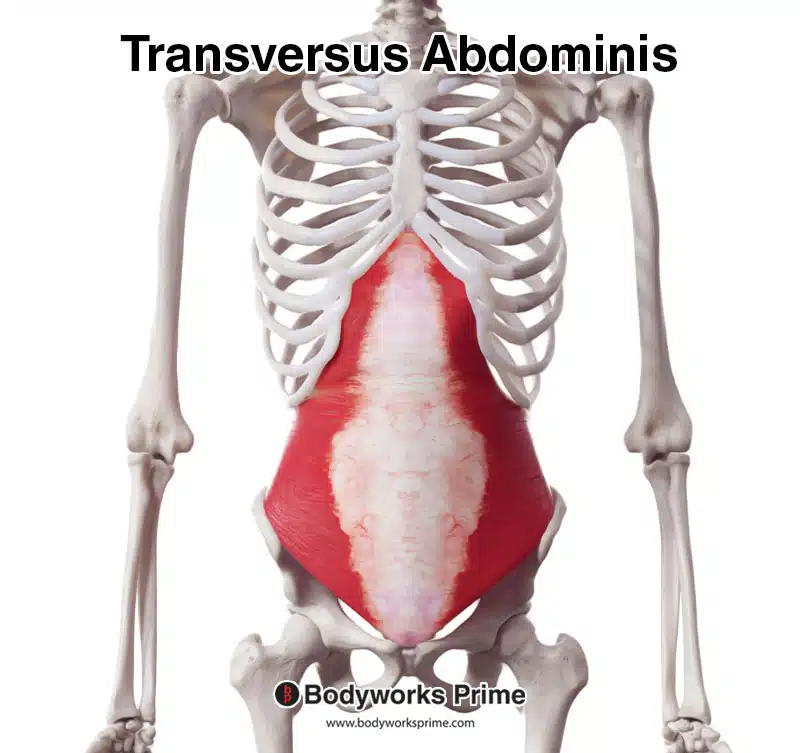
Here we can see the transversus abdominis from an anterior view.
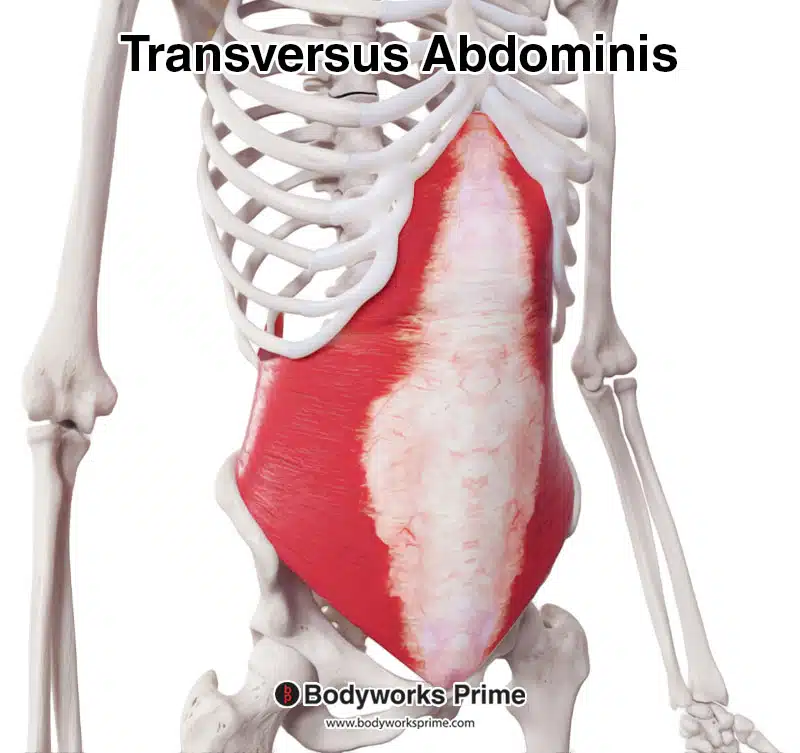
Here we can see the transversus abdominis from an anterolateral view.
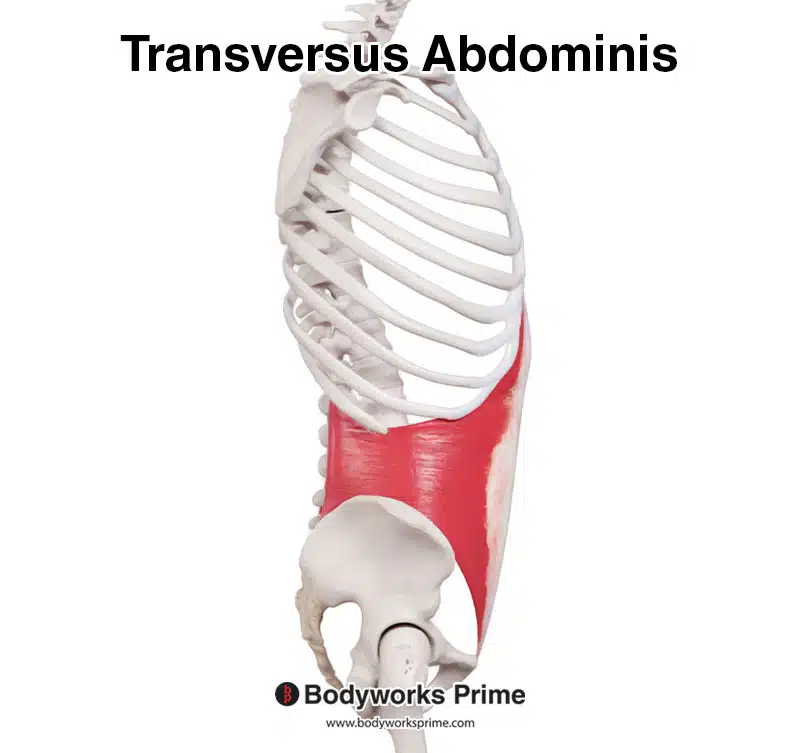
Here we can see the transversus abdominis from a lateral view.
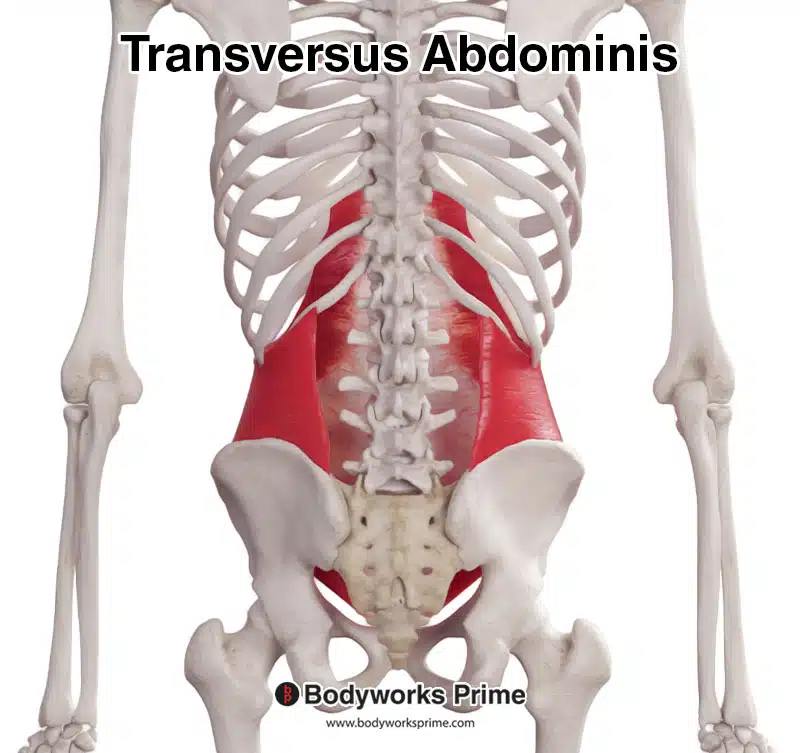
Here we can see the transversus abdominis from a posterior view.
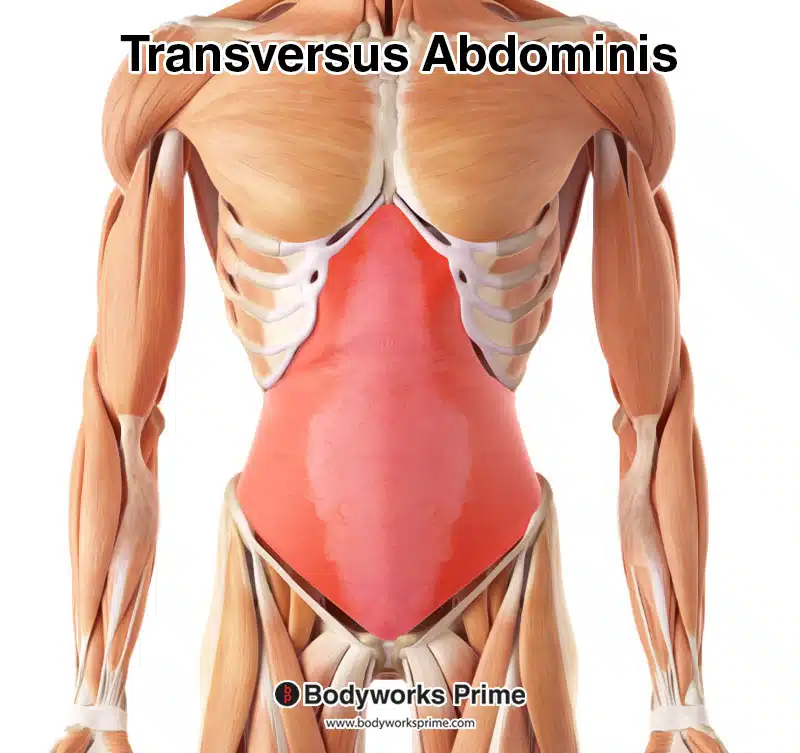
This image distinctly highlights the transversus abdominis in red, amidst the other muscles of the body. Other abdominal muscles are selectively concealed to allow clear viewing of the transversus abdominis, considering its position as the deepest of all abdominal muscles.
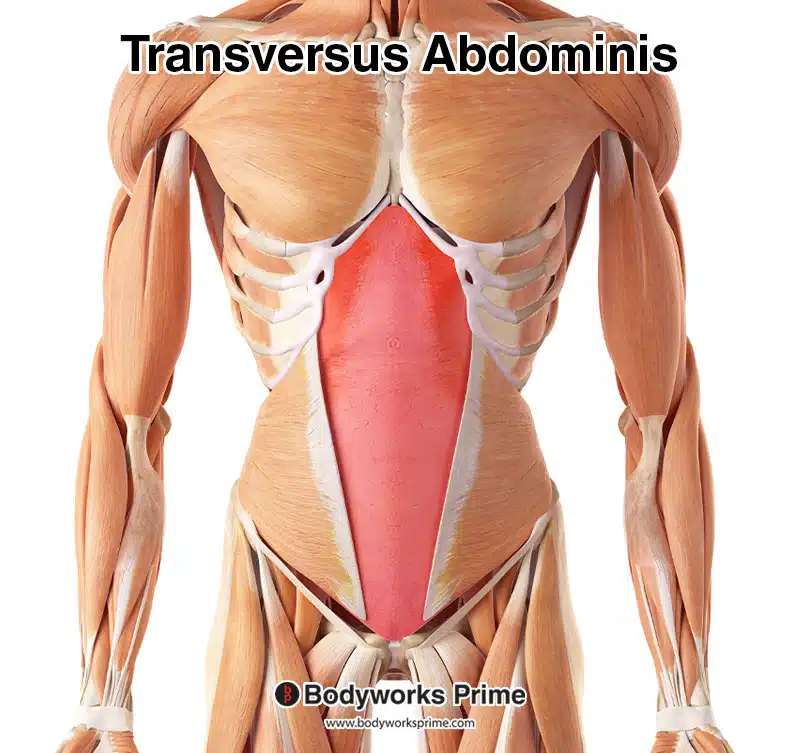
This image again showcases the transversus abdominis, highlighted in red, but this time it is partially obscured by the internal oblique muscle. While other abdominal muscles are still hidden, this image shows the transversus abdominis relative to the internal oblique muscle.
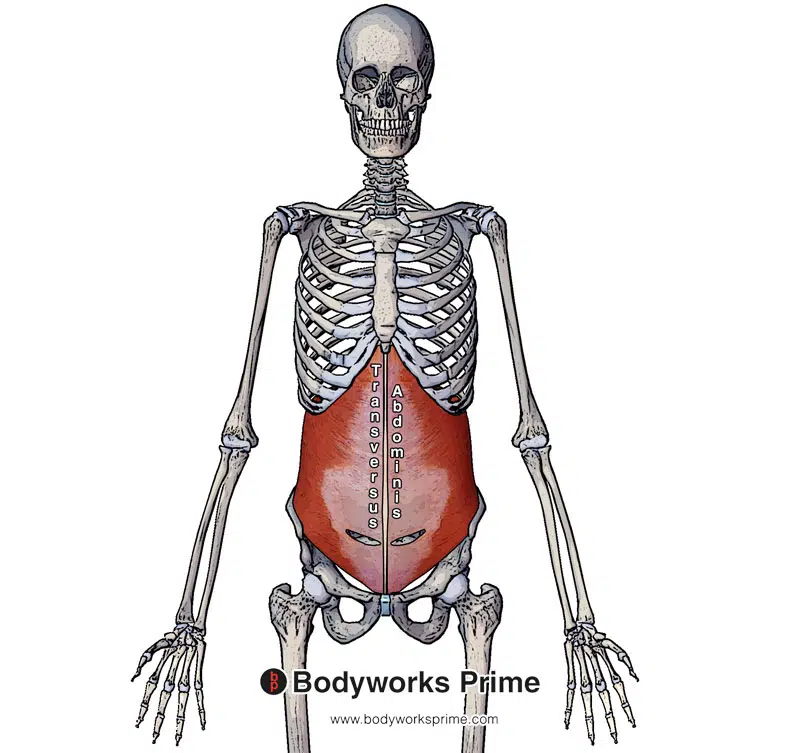
Here we can see the transversus abdominis muscle with the aponeurosis attached and connecting to the linea alba.
Origin & Insertion
The transversus abdominis muscle originates from the costal cartilages of seventh to twelfth ribs, thoracolumbar fascia, iliac crest, and inguinal ligament. It then inserts into the linea alba. It also inserts onto the pubic crest and pectineal line of the pubis via the conjoint tendon. The pectineal line is also known as the pecten pubis. The conjoint tendon is formed by the lower sections of the aponeurosis of the transversus abdominis and the internal oblique. [4] [5].
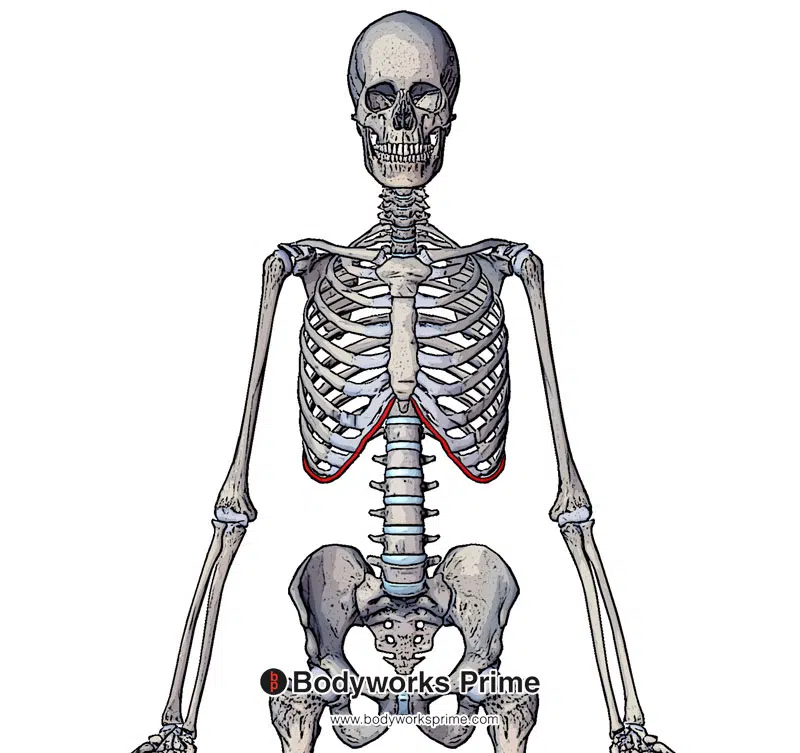
Here we can see the first origin point of the transversus abdominis on the 7th to 10th rib’s costal cartilages highlighted in red.
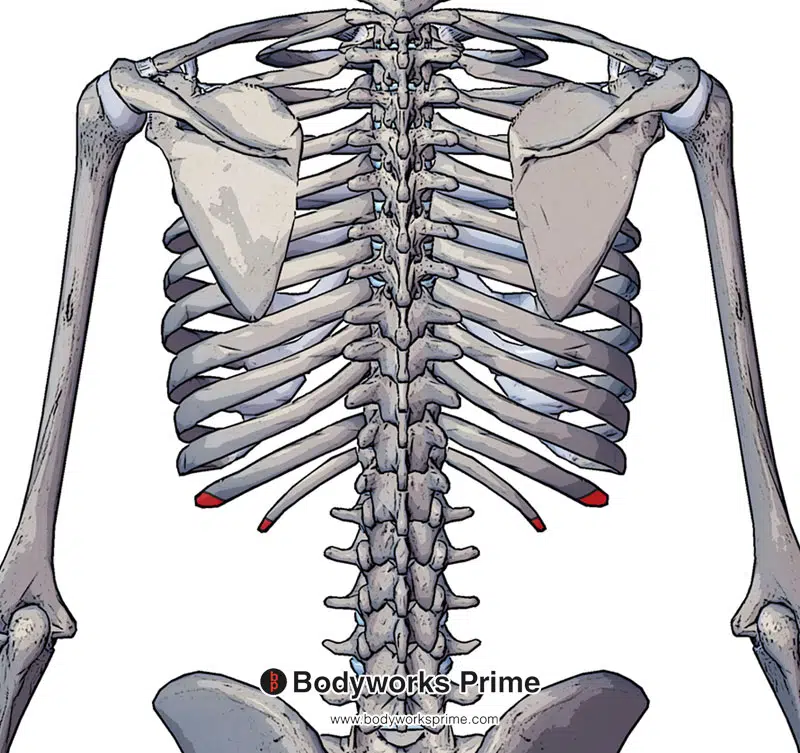
Next, we can see the final two rib origin points of the transversus abdominis on the posterior of the skeleton. Located on ribs 11 and 12 and highlighted in red.
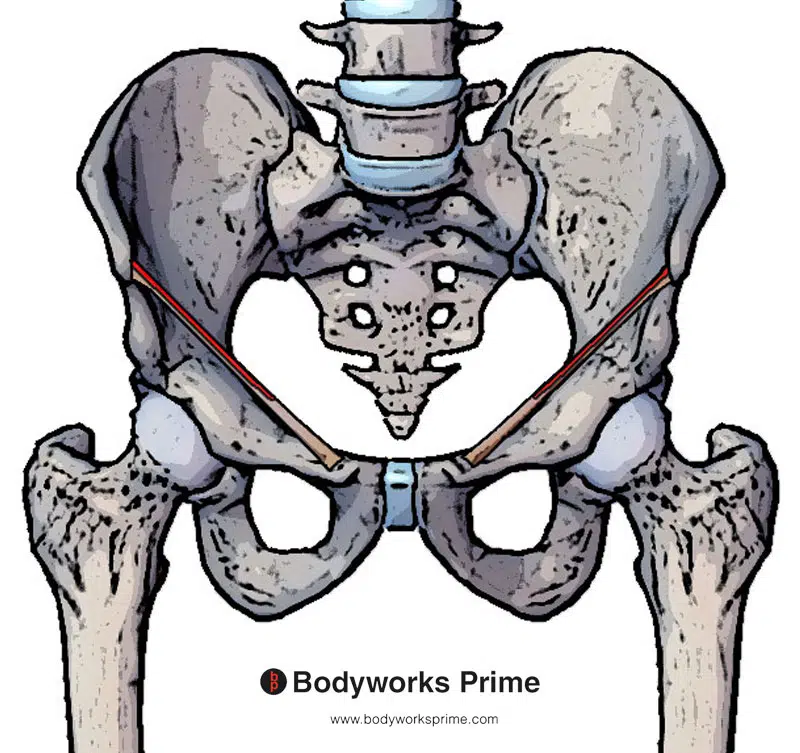
Moving inferiorly towards the pelvis we can see another origin point at the inguinal ligament highlighted in red.
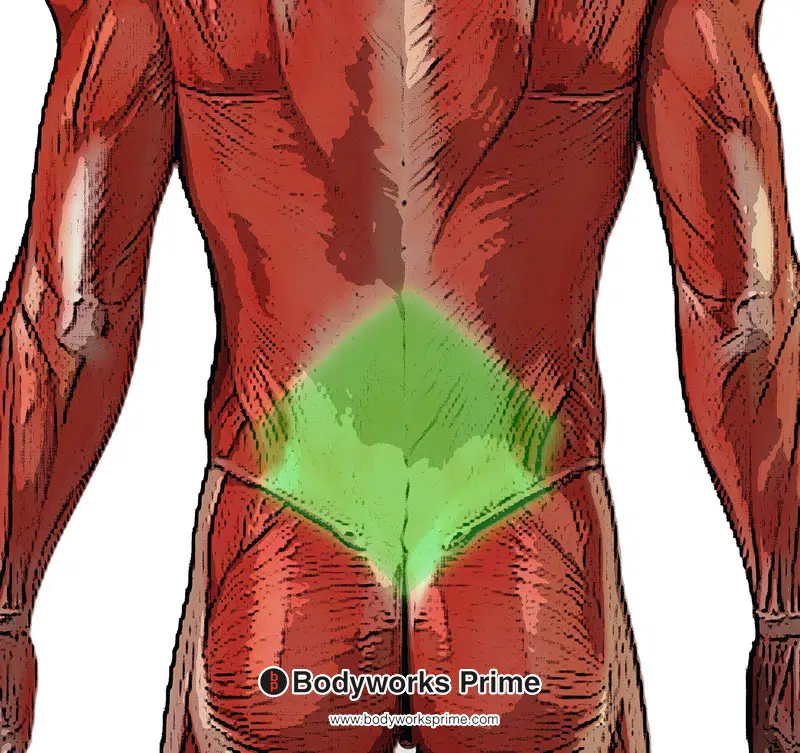
Finally, our last point of origin is the thoracolumbar fascia highlighted in green in the lower back region.
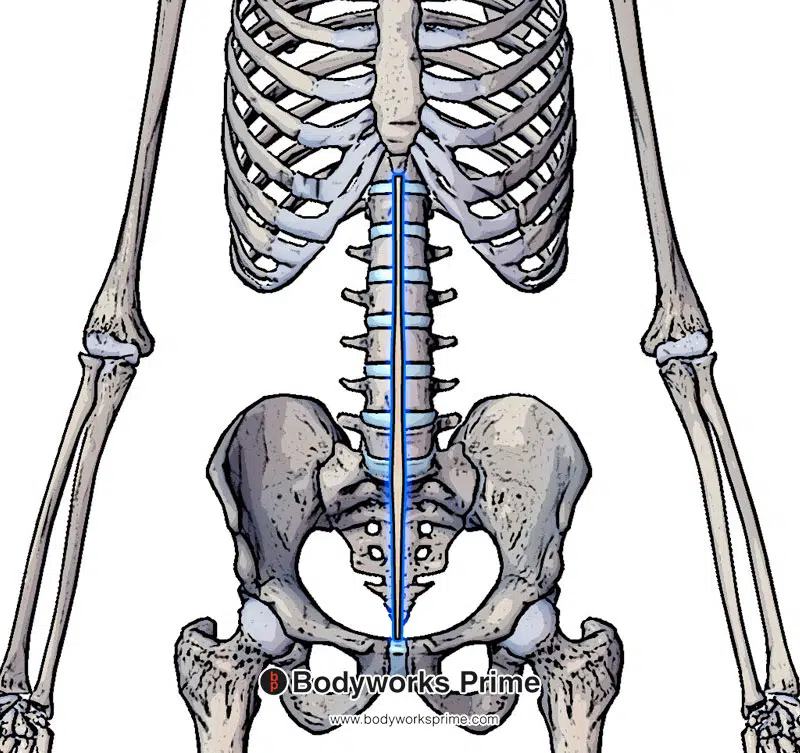
The first point of insertion of the transversus abdominis muscle is the linea alba which you can see highlighted in blue.
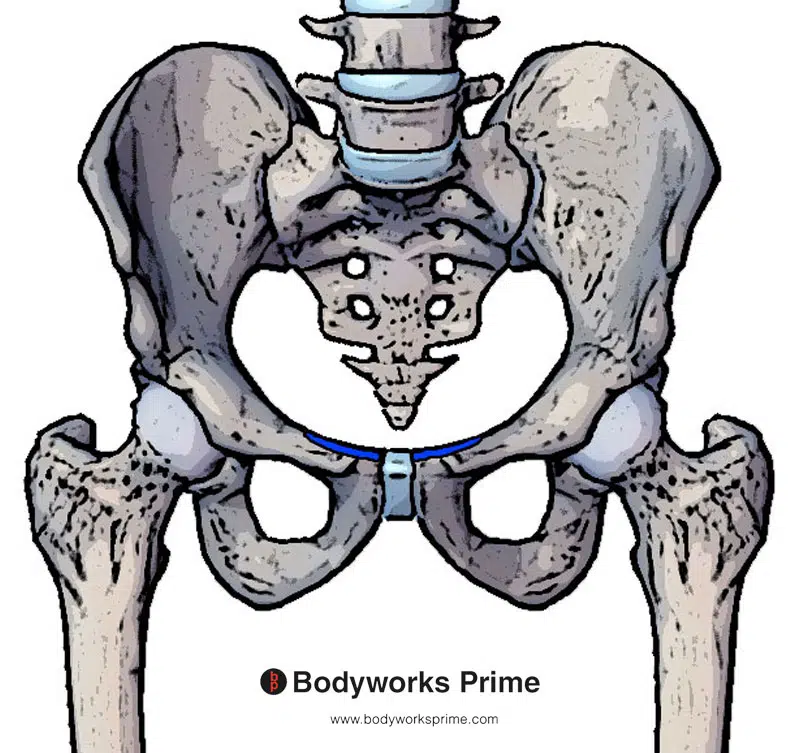
The last points of insertion are on the pubic crest and pectineal line (via conjoint tendon). The points of insertion are highlighted in blue.
Actions
The role of the transversus abdominis muscle is to compress and provides structural support to adjacent abdominal structures. This compression of the abdominal area can increase intrabdominal pressure. Furthermore, this compression can draw the belly button inwards and is involved in the ‘vacuum exercise’. The compression of the abdomen can also assist in forced expiration [6] [7].
Innervation
The transversus abdominis muscle is innervated by the intercostal nerves (T7-T11), subcostal nerves (T12) iliohypogastric nerves (L1) and ilioinguinal (L1) nerves [8] [9].
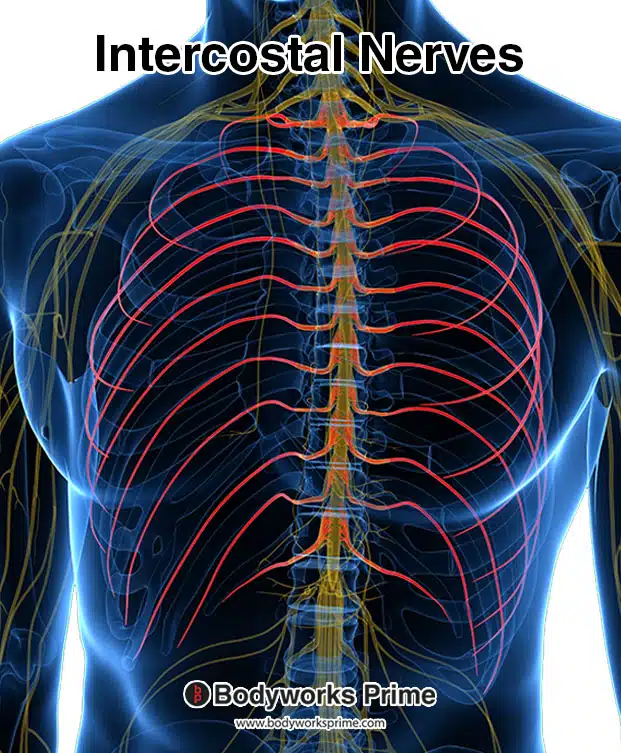
Here we can see the intercostal nerves highlighted in red. These nerves are an innervation of the transversus abdominis muscle.
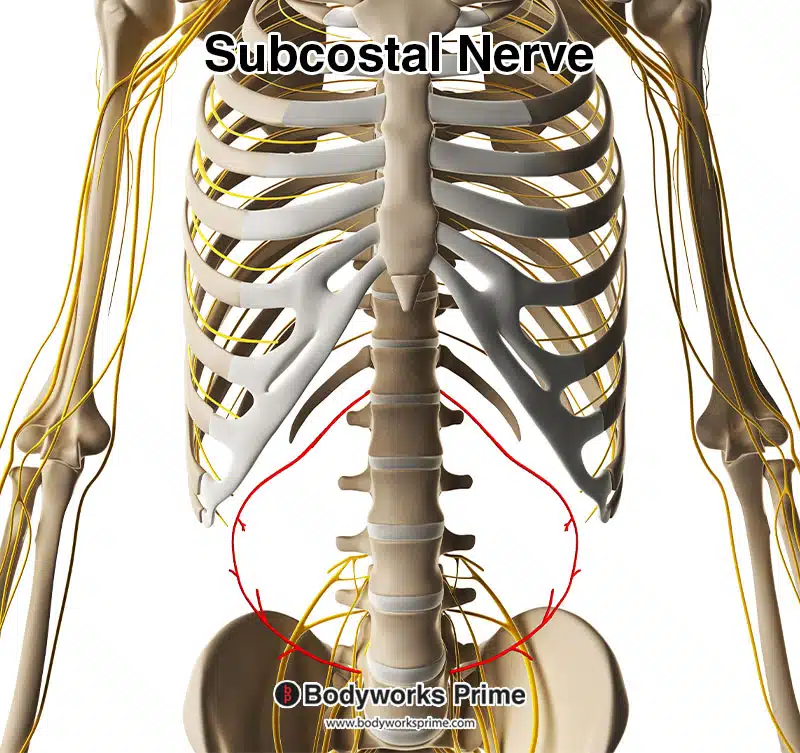
Here we can see the subcostal nerve highlighted in red. The subcostal nerve innervates the transversus abdominis muscle.
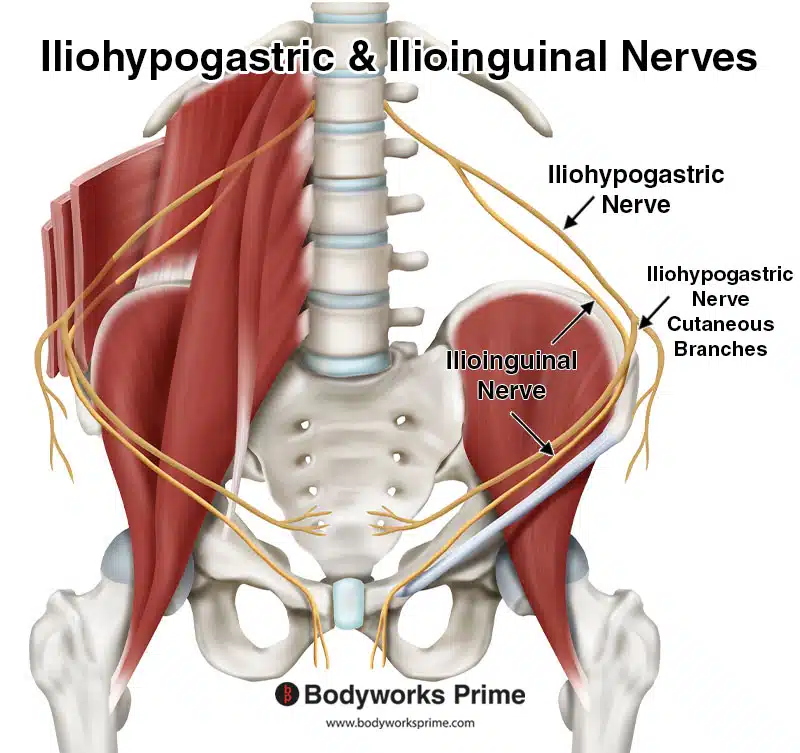
Here we can see the iliohypogastric and ilioinguinal nerves labelled. These nerves innervate the transversus abdominis muscle. The iliohypogastric and ilioinguinal nerves originate from the lumbar plexus, with both nerves arising primarily from the anterior rami of the first lumbar nerve (L1). Sometimes, the iliohypogastric nerve also receives contributions from the twelfth thoracic nerve (T12). The iliohypogastric nerve has two branches, the lateral cutaneous branch and the anterior cutaneous branch. The anterior branch in this picture is the one going around to the front of the body.
Blood Supply
The transversus abdominis muscle gets its blood supply from the lower posterior intercostal artery, subcostal artery, superficial and deep circumflex iliac arteries, and inferior and superior epigastric arteries [10] [11].
Want some flashcards to help you remember this information? Then click the link below:
Transversus Abdominis Flashcards
Support Bodyworks Prime
Running a website and YouTube channel can be expensive. Your donation helps support the creation of more content for my website and YouTube channel. All donation proceeds go towards covering expenses only. Every contribution, big or small, makes a difference!
References
| ↑1 | Varacallo M, Scharbach S, Al-Dhahir MA. Anatomy, Anterolateral Abdominal Wall Muscles. [Updated 2021 Jul 31]. In: StatPearls [Internet]. Treasure Island (FL): StatPearls Publishing; 2022 Jan-. Available from: https://www.ncbi.nlm.nih.gov/books/NBK470334/ |
|---|---|
| ↑2, ↑4 | Flynn W, Vickerton P. Anatomy, Abdomen and Pelvis, Abdominal Wall. [Updated 2021 Jul 31]. In: StatPearls [Internet]. Treasure Island (FL): StatPearls Publishing; 2022 Jan-. Available from: https://www.ncbi.nlm.nih.gov/books/NBK551649/ |
| ↑3, ↑5, ↑6, ↑8, ↑10 | Moore KL, Agur AMR, Dalley AF. Clinically Oriented Anatomy. 8th ed. Philadelphia: Lippincot Williams & Wilkins; 2017. |
| ↑7 | Hides J, Wilson S, Stanton W, McMahon S, Keto H, McMahon K, Bryant M, Richardson C. An MRI investigation into the function of the transversus abdominis muscle during “drawing-in” of the abdominal wall. Spine (Phila Pa 1976). 2006 Mar 15;31(6):E175-8. doi: 10.1097/01.brs.0000202740.86338.df. PMID: 16540858. |
| ↑9, ↑11 | Seeras K, Qasawa RN, Ju R, et al. Anatomy, Abdomen and Pelvis, Anterolateral Abdominal Wall. [Updated 2021 Jul 26]. In: StatPearls [Internet]. Treasure Island (FL): StatPearls Publishing; 2022 Jan-. Available from: https://www.ncbi.nlm.nih.gov/books/NBK525975/ |










